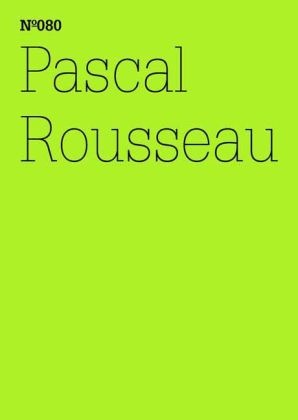Read more
Über das Medium Hypnose und seine Anhänger zieht der Philosoph Pascal Rousseau in seinem Notizbuch eine Verbindung zwischen dem Fin de siècle und dem angebrochenen 21. Jahrhundert. Gegenwärtig wird Hypnose von zahlreichen zeitgenössischen Künstlern und Kulturproduzenten als neo-konzeptuelle Methode angewandt, die die alte Aktiv-Passiv-Polarität überschreitet und die historischen Wurzeln der Hypnose reflektiert. Die Ansichten der historischen Urväter der Hypnose wie Arthur d'Anglemont (1821-1898), Paul Souriau (1852-1926) und Jean-Martin Charcot (1825-1893) werden vor dem Hintergrund zeitgenössischer Hypnosepraktiken in der Kunst erläutert und diskutiert. Hypnose als ein paradoxaler Wachzustand beeinflusst die kreative Imagination und die Selbstwahrnehmung der Subjekte. Als künstlerische Praxis und "paradoxaler Schlaf" schwebt sie demnach seit mehr als 120 Jahren zwischen Identität, Kollektivität und Utopie. Pascal Rousseau ( 1965) ist Professor für zeitgenössische Kunstgeschichte an der Université de Paris 1, Panthéon-Sorbonne.
Summary
In his notebook, philosopher Pascal Rousseau uses the medium of hypnosis and an account of its followers to draw a line from the fin de siècle to the beginning of the twenty-first century. At the moment, hypnosis is applied by various contemporary artists and cultural producers as a neo-conceptual method that transcends the polarity of active-passive and reflects on the historical roots of hypnosis. The opinions of the historic prime fathers of hypnosis, like Arthur d’Anglemont (1821–1898), Paul Souriau (1852–1926), and Jean-Martin Charcot (1825–1893), are commented on and discussed in regard to contemporary hypnosis practices in art. As a paradoxical state of being awake, hypnosis influences the creative imagination and the self-perception of its subjects. For more then 120 years it has hovered, as artistic practice and “paradoxical sleep,” between identity, collectivity, and utopia.
Pascal Rousseau (*1965) is Professor of Contemporary Art History at the Université de Paris I Panthéon-Sorbonne.

